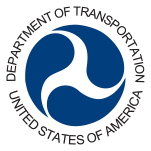Audit Reports
Insufficient Guidance, Oversight, and Coordination Hinder PHMSA’s Full Implementation of Mandates and Recommendations
Summary
The Pipeline and Hazardous Materials Safety Administration (PHMSA) develops and enforces regulations for safe operation of the Nation’s 2.6 million mile pipeline transportation system and nearly 1 million daily hazmat shipments. The Agency also responds to congressional mandates and recommendations from the National Transportation Safety Board (NTSB), the Government Accountability Office (GAO), and the Department of Transportation Office of Inspector General (OIG) on the safe transport of these materials, and addresses safety issues raised by other Operating Administrations (OA) in DOT.
PHMSA has faced criticism from Congress for its lack of timeliness in implementing mandates and recommendations. The Ranking Member of the House Transportation and Infrastructure Committee requested that we conduct this audit of PHMSA’s pipeline and hazmat safety programs. Our objectives were to assess PHMSA’s (1) progress in addressing congressional mandates and recommendations from NTSB, GAO, and OIG issued or open since 2005; (2) process for implementing mandates and recommendations, including any impediments to Agency action; and (3) efforts to coordinate and address OAs’ safety concerns.
Since 2005, PHMSA implemented 173 of its 263 mandates and recommendations, but missed many deadlines. Twenty of 81 mandates, 60 of 118 recommendations from NTSB, and 10 of 64 recommendations from GAO and OIG remain open. The Agency has also missed about 75 percent of its mandated deadlines and 85 percent of the deadlines that DOT policy requires OAs to set for notices of proposed rulemaking and final rules.
PHMSA has also not established agency-wide processes for implementing mandates and recommendations, or provided guidance to its programs offices—the Office on Pipeline Safety (OPS) and the Office on Hazardous Materials Safety (OHMS)—on implementing mandates and recommendations. Under the DOT Order on PHMSA’s organization, the Administrator sets policies and establishes processes for the Agency and its program offices. However, the Agency has not established policies on rulemaking or implementing mandates and recommendations with guidance for the program offices, the Chief Counsel, and the Chief Safety Officer on fulfilling these responsibilities. Furthermore, PHMSA has not: always followed project management requirements for implementing mandates and recommendations that require rulemakings or those that call for non-rulemaking activities; or provided adequate oversight of program offices’ efforts to implement mandates and recommendations. This lack of sufficient processes, project management, and oversight has impeded the Agency’s ability to meet deadlines.
PHMSA has also not adequately coordinated on rulemaking and international standards development with three other OAs—the Federal Aviation Administration (FAA), the Federal Motor Carrier Safety Administration (FMCSA), and the Federal Railroad Administration (FRA)—involved with hazmat transportation as required by the DOT Order. The Agency has not established agreements regarding how it and other OAs will coordinate, or developed policy and guidance on how to respond to safety concerns from FAA, FMCSA, and FRA. As a result, disputes have arisen between PHMSA and the OAs that have delayed PHMSA’s rulemakings.
We made five recommendations, four of which PHMSA concurred with. The Agency proposed an alternative approach to one recommendation, for which we requested additional information.
